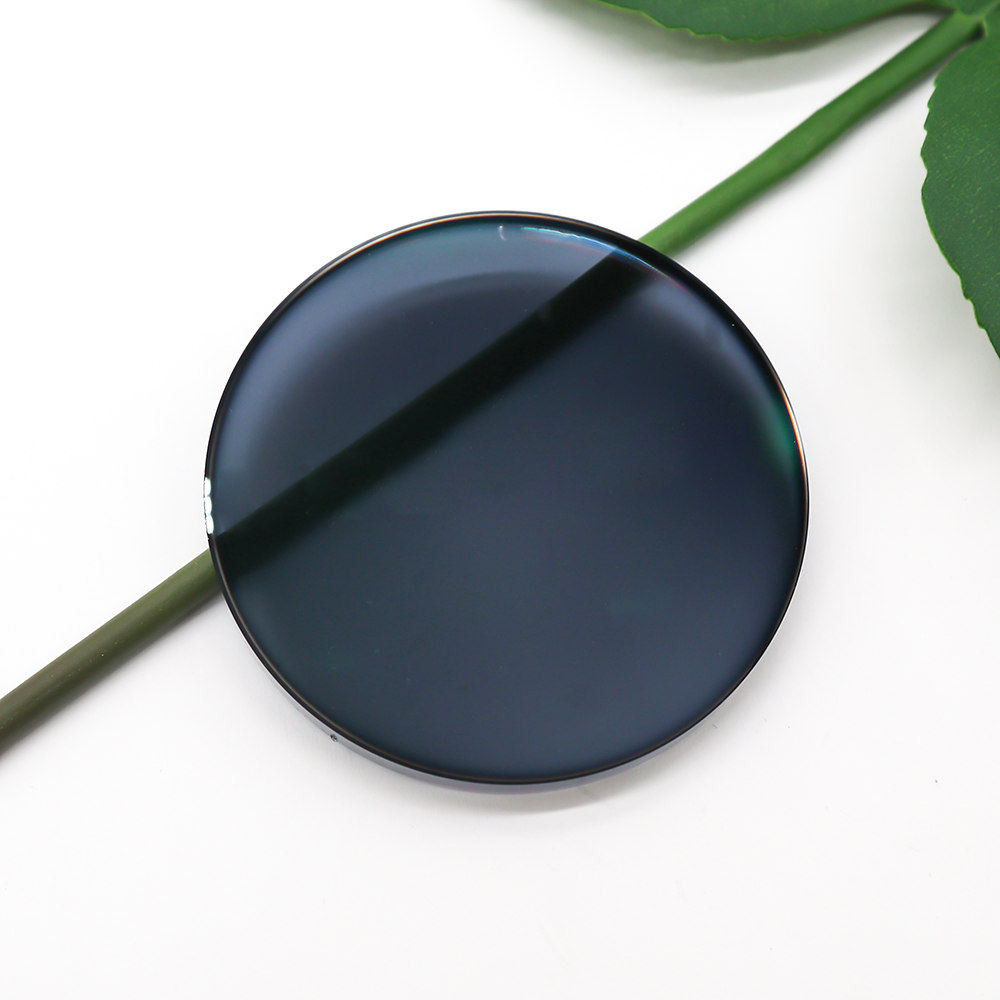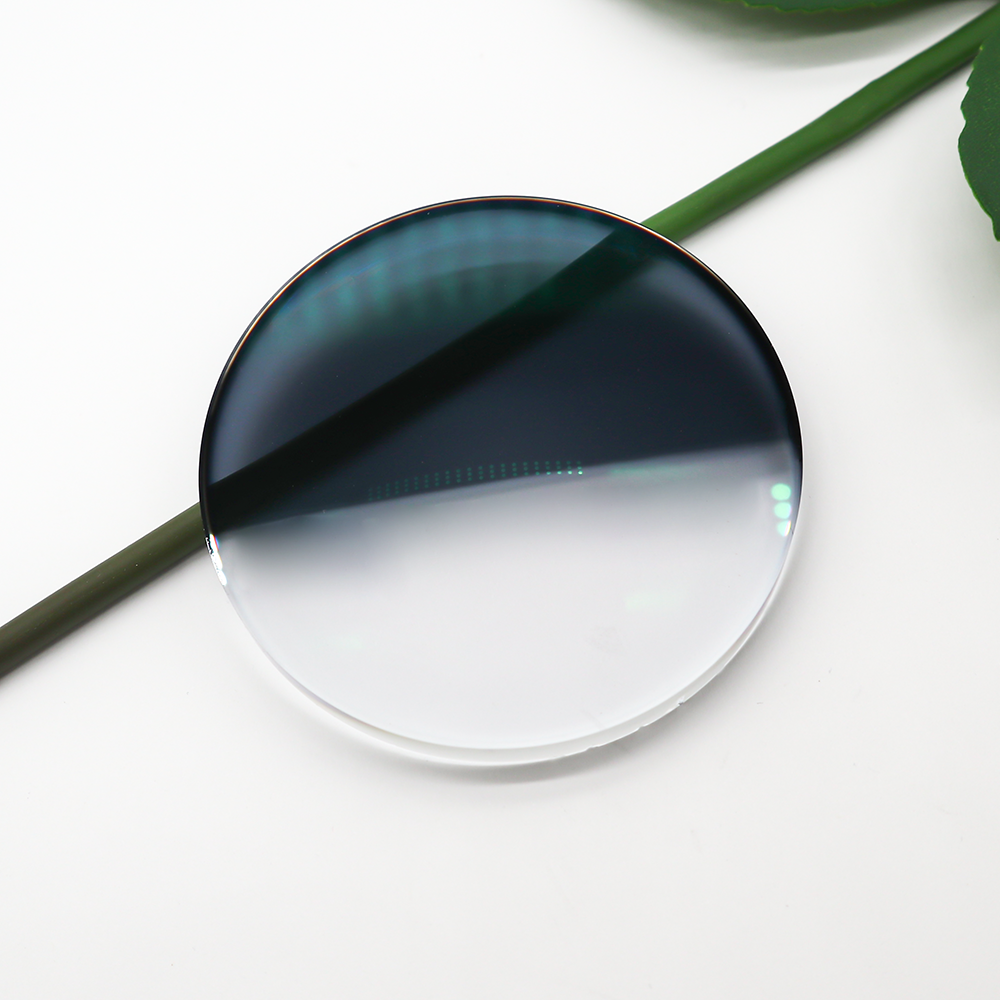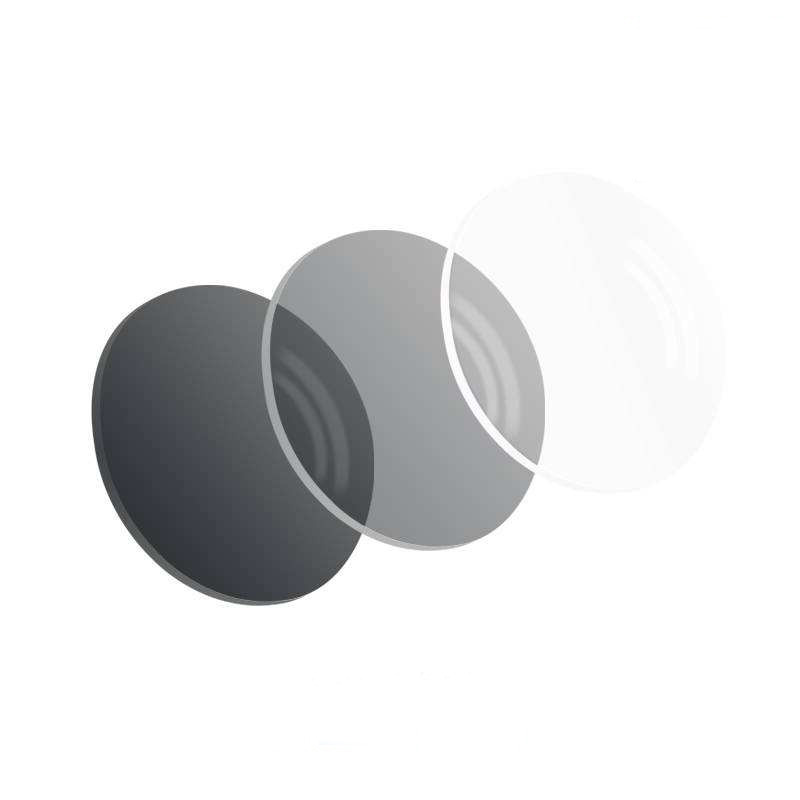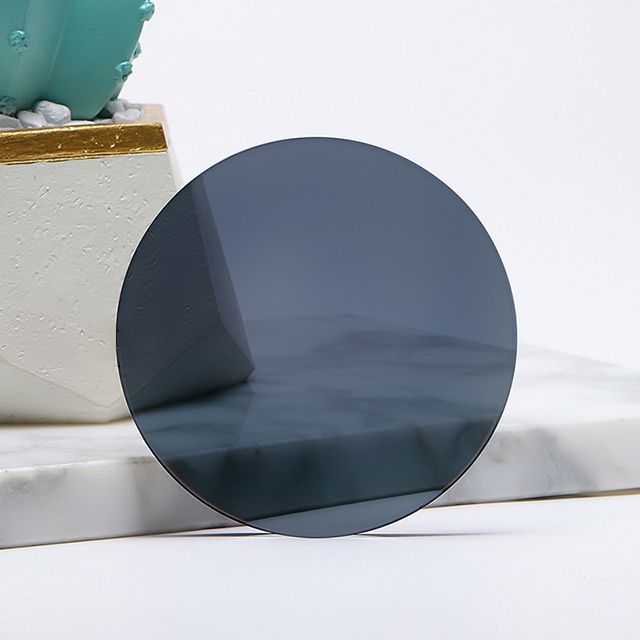SETO 1.56 photochromic lens SHMC
Specification
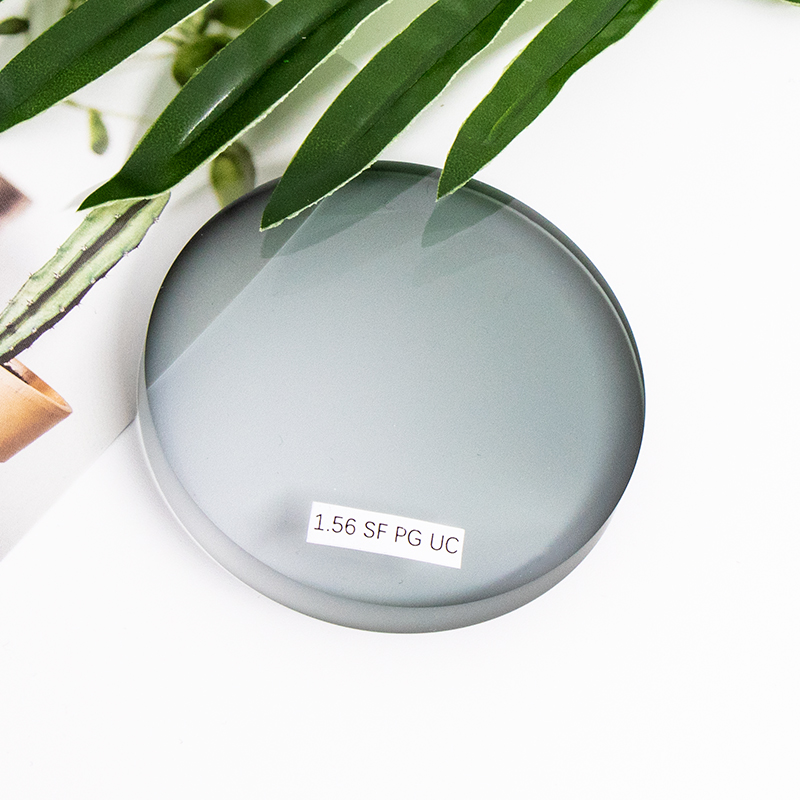
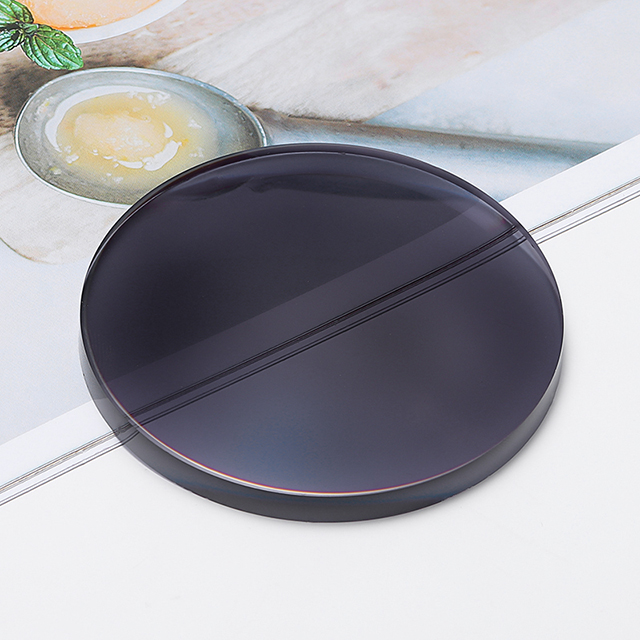
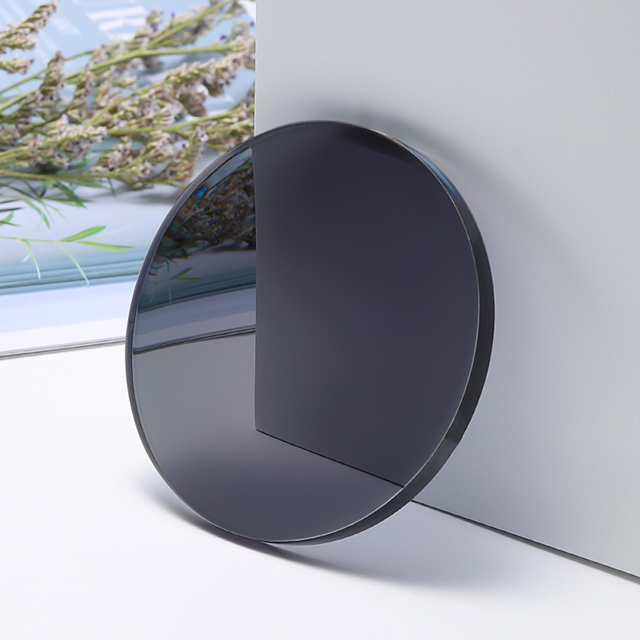
| 1.56 photochromic hmc shmc optical lens | |
| Model: | 1.56 optical lens |
| Place of Origin: | Jiangsu, China |
| Brand: | SETO |
| Lenses Material: | Resin |
| Lenses Color: | Clear |
| Refractive Index: | 1.56 |
| Diameter: | 65/70 mm |
| Function: | photochromic |
| Abbe Value: | 39 |
| Specific Gravity: | 1.17 |
| Coating Choice: | HC/HMC/SHMC |
| Coating color | Green |
| Power Range: | Sph:0.00 ~-8.00; +0.25 ~ +6.00; Cyl:0.00~ -6.00 |
Product Features
1. Classification and principle of photochromic lens
Photochromic lens according to the lens discoloration parts are divided into photochromic lens (referred to as "base change ") and membrance layer discoloration lens (referred to as" film change ") two kinds.
The substrate photochromic lens is added a chemical substance of silver halide in the lens substrate. Through the ionic reaction of silver halide, it is decomposed into silver and halide to color the lens under strong light stimulation. After the light becomes weak, it is combined into silver halide so the color becomes lighter. This technique is often used for glass photochroimc lens.
Film change lens is specially treated in lens coating process. For example, spiropyran compounds are used for high-speed spin coating on the surface of the lens. According to the intensity of light and ultraviolet light, the molecular structure itself can be switched on and off to achieve the effect of passing or blocking light.

2. Photochromic lens features
(1) color change speed
The speed of color change is an important factor to choose color change lens. The faster the lens changes color, the better, for example, from dark indoor to bright outdoor, the faster the color change speed, in order to timely prevent strong light/ultraviolet damage to the eye.
Generally speaking, the film color change technology is faster than the substrate color change technology. For example, the new membrane color change technology, photochromic factor using spiropyranoid compounds, which has better light response, using the molecular structure of its own reverse opening and closing to achieve through or block the effect of light, so faster color change.
(2) color uniformity
Color uniformity refers to the uniformity of lens color in the process of changing from light to dark or from dark to light. The more uniform the color change, the better the color change lens.
The photochromic factor on the substrate of the traditional lens is affected by the thickness of different areas of the lens. Because the center of the lens is thin and the periphery is thick, the central area of the lens changes color more slowly than the periphery, and the panda eye effect will appear. And the film layer color changing lens, the use of high speed spin coating technology, color changing film layer uniform spin coating makes color change more uniform.
(3) Service life
General color change lens service life in 1-2 years or so, like the lens in the rotation coating color layer will be enhanced coating processing, plus the color change material - spiropyranoid compound itself also has better light stability, color change function longer, basic can reach more than two years.
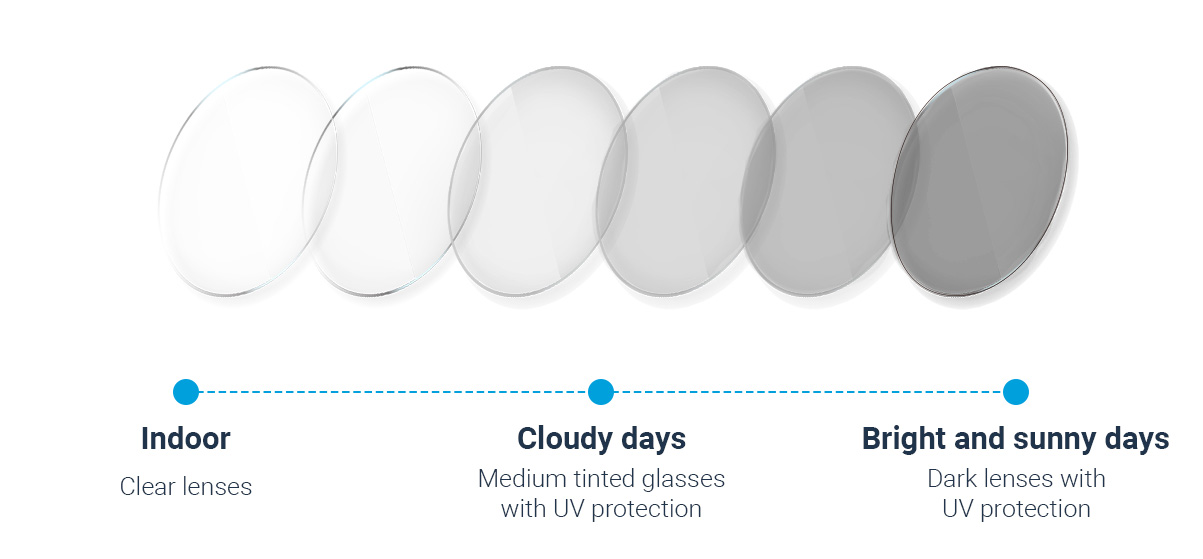
3.What are the advantages of grey lenses?
Can absorb infrared ray and 98% ultraviolet ray. The biggest advantage of gray lens is that it will not change the original color of the scene because of the lens, and the most satisfying is that it can very effectively reduce the light intensity. Gray lenses can absorb any color spectrum evenly, so the scene will only be dark, but there will be no obvious color difference, showing the true sense of nature. Belong to the neutral color system, in line with the use of all groups.
4. What is the difference between HC, HMC and SHC?
| Hard coating | AR coating/Hard multi coating | Super hydrophobic coating |
| makes the uncoated lens hard and increases the abrasion resistance | increases the transmittance of the lens and reduces surface reflections | makes the lens waterproof, antistatic, anti slip and oil resistance |
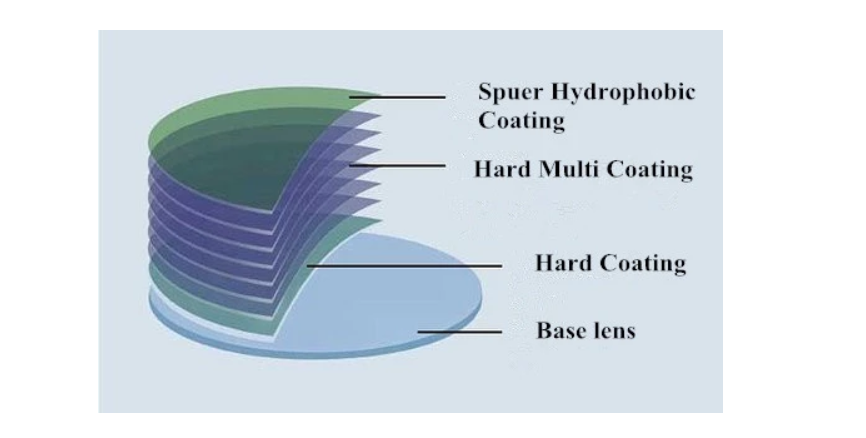
Certification



Our Factory




